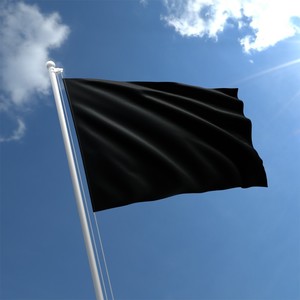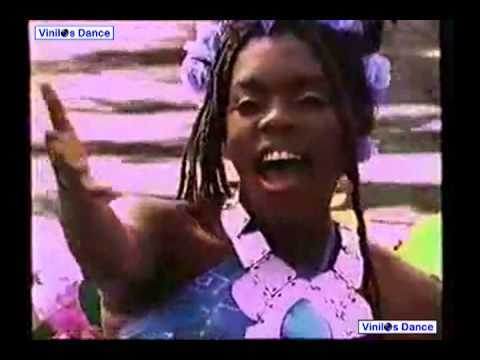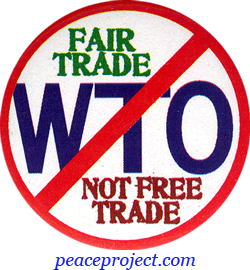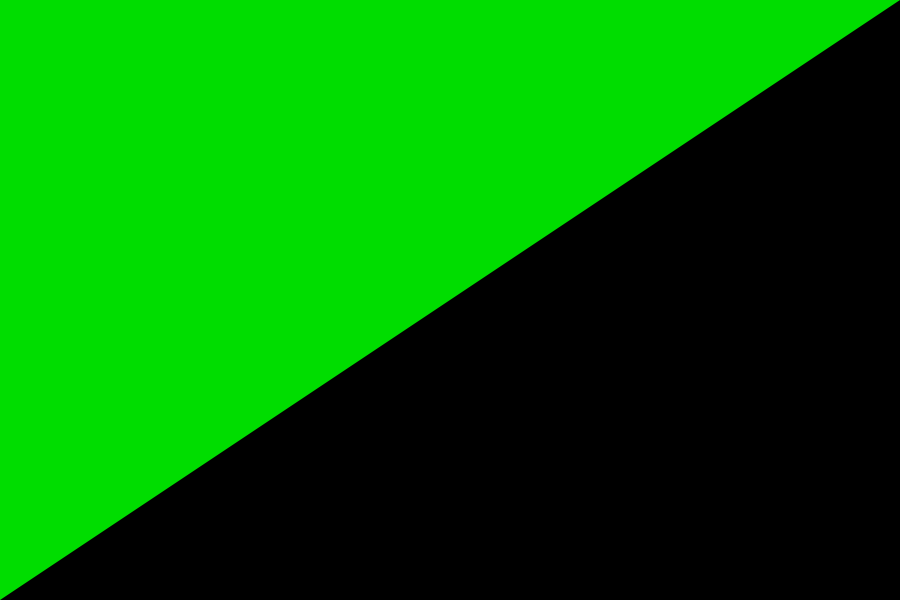James Hadfield
"What is the history of the Black Flag? There are ample accounts of the use of black flags by anarchists. Probably the most famous, was Nestor Makhno's partisans during the Russia Revolution. Under the black banner, his army routed a dozen armies and kept a large portion of the Ukraine free from concentrated power for a good couple years (see Peter Arshinov's History of the Makhnovist Movement for details of this important movement). On the black flag was embroidered "Liberty of Death" and "The Land to the Peasant, The Factories to the Workers." [Peter Marshall, Demanding the Impossible, p. 475] In the 1910s, Emiliano Zapata, the Mexican revolutionary, used a black flag with a skull & crossbones & the Virgin on it -- it also had "Land & Liberty" as a slogan ("Tierra y Libertad"). In 1925, the Japanese anarchists formed the Black Youth League and, in 1945, when the anarchist federation reformed, their journal was named Kurohata (Black Flag) [Op. Cit., p. 525-6]. More recently, Parisian students carried black (and red) flags during the massive General Strike of 1968 as well as at the America Students for a Democratic Society national convention of the same year. At about the same time, the British based magazine Black Flag was started and is still going strong. Today, if you go to any sizeable demonstration you will usually see the Black Flag raised by the anarchists present. But the anarchists' black flag originated much earlier than this. The first account is actually unknown. It seems that this credit is reserved for Louise Michel, famous participant in the Paris Commune of 1871. According to Anarchist historian George Woodcock, Michel flew the black flag on March 9, 1883, during demonstration of the unemployed in Paris, France. With 500 strong, Michel at the lead and shouting "Bread, work, or lead!", they pillaged three baker's shops before being arrested by the police [George Woodcock, Anarchism, pp. 251]. No earlier reports can be found of Anarchists and the black flag. Not long after, the black symbol made it's way to America. Paul Avrich reports that on November 27, 1884, the black flag was displayed in Chicago at an Anarchist demonstration. According to Avrich, August Spies, one of the famous Haymarket martyrs, "noted that this was the first occasion on which [the black flag] had been unfurled on American soil" [Paul Avrich, The Haymarket Tragedy, pp. 144-145]. On a more dreary note, February 13, 1921 was the date that marked the end of black flags in Soviet Russia. On that day, Peter Kropotkin's funeral took place in Moscow. Masses of people whose march stretched for miles, carried black banners that read, "Where there is authority there is no freedom." [Paul Avrich, The Anarchists in the Russian Revolution, p. 26] It seems that black flags didn't appear in Russia until the founding of the Chernoe Zhania ("black banner") movement in 1905. Only two weeks after Kropotkin's funeral march, the Kronstadt rebellion broke out and anarchism was erased from Soviet Russia for good. While the events above are fairly well known, as has been related, the exact origin of the black flag is not. What is known is that a large number of Anarchist groups in the early 1880s adopted titles associated with black. In July of 1881, the Black International was founded in London. This was an attempt to reorganise the Anarchist wing of recently dissolved First International [George Woodcock, Op. Cit., p. 212-4]. In October 1881, a meeting in Chicago lead to the International Working People's Association being formed in North America. This organisation, also known as the Black International, affiliated to the London organisation. [Clifford Harper, Anarchy: A Graphic Guide, p. 76, Woodcock, Op. Cit., p. 393] These two conferences are immediately followed by Michel's demonstration (1883) and the black flags in Chicago (1884). Further solidifying this period (circa early 1880s) as the birth of the symbol is the name of a short lived French Anarchist publication: "Le Drapeau Noir" (The Black Flag). According to Roderick Kedward, this Anarchist paper existed for a few years dating sometime before October 1882, when a bomb was thrown into a cafe in Lyons [The Anarchists: the men who shocked an era p. 35]. Backing up this theory, Avrich states that in 1884, the black flag "was the new anarchist emblem" [Paul Avrich, The Haymarket Tragedy, p. 144]. In agreement, Murray Bookchin reports that "in later years, the Anarchists were to adopt the black flag" when speaking of the Spanish Anarchist movement in June, 1870 [Murray Bookchin, The Spanish Anarchists, p. 57]. At that time, anarchists widely used the red flag. It appears obvious (though not conclusive) that this is the period that the black flag bonded with Anarchism. However, use of the red flag did not instantly die out. Thus we find Kropotkin writing Words of a Rebel (published in 1885, but written between 1880 and 1882) of "anarchist groups . . . rais[ing] the red flag of revolution." As Woodcock notes, the "black flag was not universally accepted by anarchists at this time. Many, like Kropotkin, still thought of themselves as socialists and of the red flag as theirs also." [Words of a Rebel, p. 75, p. 225] In addition, we find the Chicago anarchists using both black and red flags all through the 1880s. The general drift away from the red flag towards the black must be placed in the historical context. During the later part of the 1870s and in the 1880s the socialist movement was changing. Marxist social democracy was being the dominant socialist trend, with libertarian socialism going into decline in many areas. Thus the red flag was increasingly associated with the authoritarian and statist (and increasingly reformist) side of the socialist movement. In order to distinguish themselves from other socialists, the use of the black flag makes perfect sense. Not only was it an accepted symbol of working class revolt, it shared the same origins in the 1831 Lyons revolt [Bookchin, The Third Revolution, vol. 2, p. 65]. It seems that figuring out when the connection was made is easier than finding out why, exactly, black was chosen. The Chicago "Alarm", which is right from the horses mouth, stated that the black flag is "the fearful symbol of hunger. misery and death" [Paul Avrich, The Haymarket Tragedy, p. 144]. Bookchin asserts that the black flag is the "symbol of the workers misery and as an expression of their anger and bitterness." [Op. Cit., p. 57]. Historian Bruce C. Nelson also notes that the Black Flag was considered "the emblem of hunger" when it was unfurled in Chicago in 1884. [Beyond the Martyrs: A Social History of Chicago's Anarchists, p. 141, p. 150] Along these lines, Albert Meltzer maintains that the association between the black flag and working class revolt "originated in Rheims [France] in 1831 ('Work or Death') in an unemployed demonstration." [Albert Meltzer, The Anarcho-Quiz Book, p. 49] In fact he goes on to assert that it was Michel's action in 1883 that solidified the association. The links from revolts in France to anarchism are even stronger. As Murray Bookchin records, "[i]n 1831, the silk-weaving artisans. . . rose in armed conflict to gain a better tarif, or contract, from the merchants. For a brief period they actually took control of the city, under red and black flags -- which made their insurrection a memorable event in the history of revolutionary symbols. Their use of the word mutuelisme to denote the associative disposition of society that they preferred made their insurrection a memorable event in the history of anarchist thought as well, since Proudhon appears to have picked up the word from them during his brief stay in the city in 1843-4." [The Third Revolution, vol. 2, p. 157] Kropotkin himself states that its use continued in the French labour movement after this uprising. He notes that the Paris Workers "raised in June [1848] their black flag of 'Bread or Labour'" [Act for Yourselves, p. 100] The use of the black flag by anarchists, therefore, is an expression of their roots and activity in the labour movement in Europe, particularly in France. The anarchist adoption of the Black Flag by the anarchist movement in the 1880s reflects its use as "the traditional symbol of hunger, poverty and despair" and that it was "raised during popular risings in Europe as a sign of no surrender and no quarter." [Walter and Becker, Act for Yourselves, p. 128] This is unsurprising given the nature of anarchist politics. Just as anarchists base their ideas on actual working class practice, they would also base their symbols on those created by the practice. For example, Proudhon as well as taking the term "mutualism" from radical workers also argued that co-operative "labour associations" had "spontaneously, without prompting and without capital been formed in Paris and in Lyon. . . the proof of it [mutualism, the organisation of credit and labour]. . . lies in current practice, revolutionary practice." He considered his ideas, in other words, to be an expression of working class self-activity. [No Gods, No Masters, vol. 1, pp. 59-60] Indeed, according to K. Steven Vincent, there was "close similarity between the associational ideal of Proudhon . . . and the program of the Lyon Mutualists" and that there was "a remarkable convergence [between the ideas], and it is likely that Proudhon was able to articulate his positive program more coherently because of the example of the silk workers of Lyon. The socialist ideal that he championed was already being realised, to a certain extent, by such workers." [Piere-Joseph Proudhon and the Rise of French Republican Socialism, p. 164] Other anarchists have made similar arguments concerning anarchism being the expression of tendencies within society and working class struggle (for Kropotkin see section J.5) and so the using of a traditional workers' symbol would be a natural expression of this aspect of anarchism. But there are other possibilities. Black is a very powerful colour, or anti-colour as it were. The 1880s were a time of extreme anarchist activity. The Black International saw the introduction of "propaganda by the deed" as an anarchist platform. Historically black has been associated with blood -- dried blood specifically -- like the red flag. So while it is tied to working class rebellion, it was also a symbol of the nihilism of the period (a nihilism generated by the mass slaughter of Communards by the French ruling class after the fall of the Paris Commune of 1871). It is this slaughter of the Communards which may also point to the use of the Black Flag by anarchists. Black "is the colour of mourning [at least in Western cultures], it symbolises our mourning for dead comrades, those whose lives were taken by war, on the battlefield (between states) or in the streets and on the picket lines (between classes)." [Chico, "letters", Freedom, vol. 48, No. 12, p. 10] Given the 25 000 dead in the Commune, many of them anarchists and libertarian socialists, the use of the Black Flag by anarchists after this event would make sense. Sandino, the Nicaraguan libertarian socialist (whose use of the red-and-black colours we discuss in the next section) also said that black stood for mourning ("Red for liberty; black for mourning; and the skull for a struggle to the death" [Donald C. Hodges, Sandino's Communism, p. 24]). There is a possible philosophical rationale behind the use the colour black. Another reason why anarchists turned to the black flag could be because of its nature as a sign of "negation". Many of the writers on the Black Flag have mentioned this aspect, for example Howard J. Ehrlich argues that black "is a shade of negation. The black flag is the negation of all flags." [Reinventing Anarchy, Again, p. 31] As a symbol of negation, the black flag fits nicely in with some of Bakunin's ideas -- particularly his ideas on progress. Being influenced by Hegel, Bakunin accepted Hegel's dialectical method but always stressed that the negative side was motive force within it (see Robert M. Culter's introduction to The Basic Bakunin for details). Thus he defines progress as the negation of the initial position (for example, in God and the State, he argues that "[e]very development . . . implies the negation of its point of departure" [p. 48]). What better sign to signify the anarchist movement than one which is the negation of all other flags, this negation signifying the movement into a higher form of social life? Thus the black flag could symbolise the negation of existing society, of all existing states, and so paves the way for a new society, a free one. However, whether this was a factor in the adoption of the black flag or just a coincidence we cannot tell at this moment. There is also an interesting connection between the black flag and pirates. There is an unconfirmed report that Louise Michel, while lead the women's battalion during the Paris Commune of 1871, may have flown the skull and crossbones. But the association may go further. Pirates were seen as rebels, as free spirits, and often ruthless killers. While pirates varied a great deal, many had an elected Captain of the pirate ship. In some cases the captain wasn't even male, which was very unusual for the time. He or she was "subject to instant recall", and life on board a pirate ship was certainly more democratic than life on board ships of the British, American or French Navies -- let alone a merchant ship. For pirates, the black flag was a symbol of death; the give-away being a skull and bones on black. A sign equivalent with "surrender or die!" It was intended to scare their victims into submitting without a fight. It operated in much the same way as Ghengis Khan's armies. Many others also adopted the black flag as a sign of "surrender or die!". A Confederate officer named Quantrill in during the American Civil War fought under the black flag. He was known as unwilling to show mercy to his opponents and he did not expect any mercy in return. Also, General Santa Anna of Mexico was a notorious flyer of the black flag. He even flew them at the Alamo. Accompanying the black banner, he had his buglers play a call named "The Deguello," which was a call that meant "no quarter will be given" (Take No Prisoners). This use of the black flag was echoed by the America anarchists of the Black International. While it "was interpreted in anarchist circles as the symbol of death, hunger and misery" it was "also said to be the 'emblem of retribution'" and in a labour procession in Cincinnati in January 1885, "it was further acknowledged to be the banner of working-class intransigence, as demonstrated by the words 'No Quarter' inscribed on it." [Donald C. Hodges, Sandino's Communism, p. 21 -- see also Avrich, Op. Cit., p. 82] While Khan, Quantrill and General Santa Anna are not connected to anarchism in the slightest -- pirates, on the other hand, are more complicated. They were seen as rebels. Rebels without a state, owing allegiance to no code of law except whatever makeshift rules they improvised amongst themselves. Certainly pirates were not consciously anarchist, and often acted no better than barbarians. But what is important is how they were seen. Their symbol was the embodiment of rebellion and the spirit of lawlessness and rebellion. They were hated by the ruling class. This may have been enough for the starving and unemployed to pick up the black flag in revolt. In fact, one could quickly get a hold of a piece of red or black cloth in a riot. Getting hold of the material was easy. Painting a complicated symbol on it took time. So an improvised rebel flag raised in a riot was likely to be of just one colour. Hence it follows nicely that the black flag flew without the skull and bones because it was necessarily make-shift for a riot. To this question of the black flag, Howard Ehrlich has a great passage in his book Reinventing Anarchy, Again. It is worth quoting at length: "Why is our flag black? Black is a shade of negation. The black flag is the negation of all flags. It is a negation of nationhood which puts the human race against itself and denies the unity of all humankind. Black is a mood of anger and outrage at all the hideous crimes against humanity perpetrated in the name of allegiance to one state or another. It is anger and outrage at the insult to human intelligence implied in the pretences, hypocrisies, and cheap chicaneries of governments . . . Black is also a colour of mourning; the black flag which cancels out the nation also mourns its victims the countless millions murdered in wars, external and internal, to the greater glory and stability of some bloody state. It mourns for those whose labour is robbed (taxed) to pay for the slaughter and oppression of other human beings. It mourns not only the death of the body but the crippling of the spirit under authoritarian and hierarchic systems; it mourns the millions of brain cells blacked out with never a chance to light up the world. It is a colour of inconsolable grief. "But black is also beautiful. It is a colour of determination, of resolve, of strength, a colour by which all others are clarified and defined. Black is the mysterious surrounding of germination, of fertility, the breeding ground of new life which always evolves, renews, refreshes, and reproduces itself in darkness. The seed hidden in the earth, the strange journey of the sperm, the secret growth of the embryo in the womb all these the blackness surrounds and protects. "So black is negation, is anger, is outrage, is mourning, is beauty, is hope, is the fostering and sheltering of new forms of human life and relationship on and with this earth. The black flag means all these things. We are proud to carry it, sorry we have to, and look forward to the day when such a symbol will no longer be necessary." [Reinventing Anarchy, Again, pp. 31-2] "
POINTS TOTAL
- 0 TODAY
- 0 THIS WEEK
- 149 TOTAL
participant impact
-
UP TO1whole food mealconsumed
James's actions
Waste
Use Reusable Bags
I will not accept any disposable bags when making purchases.
Waste
Use a Reusable Mug
I will avoid sending 2 disposable cup(s) to the landfill each day by using a reusable mug.
Simplicity
Organize a Course
I will organize NWEI's discussion course 'Voluntary Simplicity' with my family, friends, coworkers, or classmates.
Food
Whole Foods Diet
I will enjoy 1 meal(s) each day free of processed foods.
Transportation
Improve a Bus Stop
I will improve a bus stop in my neighborhood by posting the stop schedule, adding seating or shelter, adding art or flowers, picking up litter, or some other small improvement.
Food
Weekly Meal Planning
I will reduce food waste and save money by planning a weekly menu, only buying the ingredients I need.
Participant Feed
Reflection, encouragement, and relationship building are all important aspects of getting a new habit to stick.
Share thoughts, encourage others, and reinforce positive new habits on the Feed.
To get started, share “your why.” Why did you join the challenge and choose the actions you did?
-
REFLECTION QUESTIONWaste Use Reusable BagsWhat do you do if you find yourself in the situation of needing a bag for items but don't have a reuseable one with you? Carry things out in your hands? In a cart? Accept a disposable one? If you find yourself in this position often, what system could you put in place to try to establish this a successful habit?
-
REFLECTION QUESTIONFood Whole Foods DietMichael Pollan states that "it is better to pay the grocer (our edit: or the farmer!) than the doctor." What are your thoughts on this?
-
 James Hadfield 11/05/2018 2:27 PMYou are inspired to become even more Greener and to promote a circular closed loop way of living for Planet Earth and all connected to it, which is everything anyway ! :-)
James Hadfield 11/05/2018 2:27 PMYou are inspired to become even more Greener and to promote a circular closed loop way of living for Planet Earth and all connected to it, which is everything anyway ! :-) -
 James Hadfield 10/18/2018 7:19 PMPeace, Love, Humanity and for Planet Earth !
James Hadfield 10/18/2018 7:19 PMPeace, Love, Humanity and for Planet Earth ! -
REFLECTION QUESTIONSimplicity Organize a CourseHow can you use NWEI programs to help mobilize your community to take action toward a sustainable future?
-
 James Hadfield 10/18/2018 7:12 PM
James Hadfield 10/18/2018 7:12 PM -
 James Hadfield 10/18/2018 5:46 PM
James Hadfield 10/18/2018 5:46 PM




